Coolsculpting: Effective Non-invasive for reducing fat cell
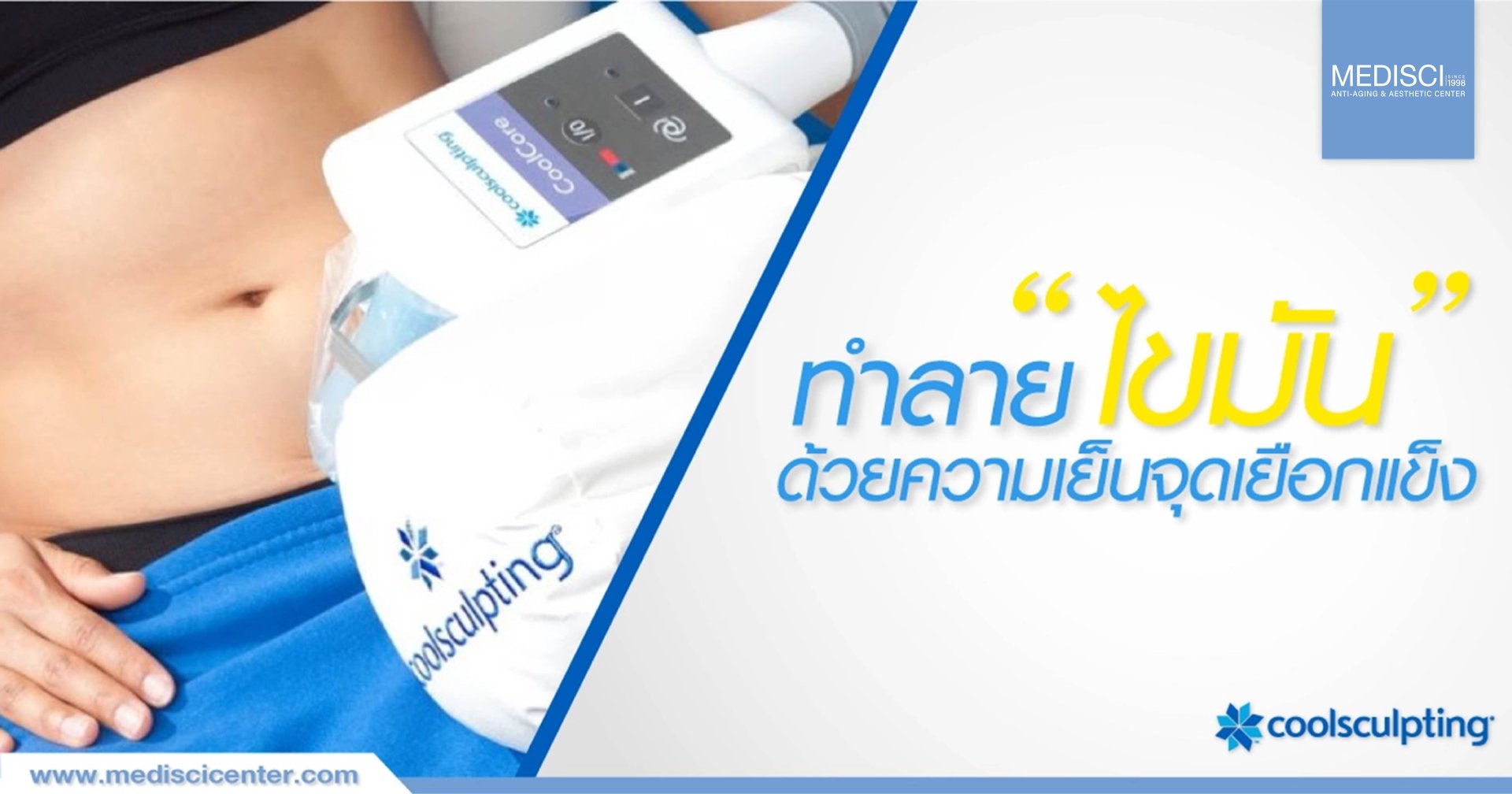
Coolsculpting
What is Coolsculpting? Coolsculpting is a non-invasive technology using controlled cooling to kill local subcutaneous fat cells which is safe and effective. In a suitable duration, Coolsculpting leading to Cryolipolysis™ causes adipose cell freezing and defunctioning. Thus, subcutaneous layer becomes thinner and is unable to restore or regain. Similar to liposuction, this technology causes stubborn adipose cells to go for good.
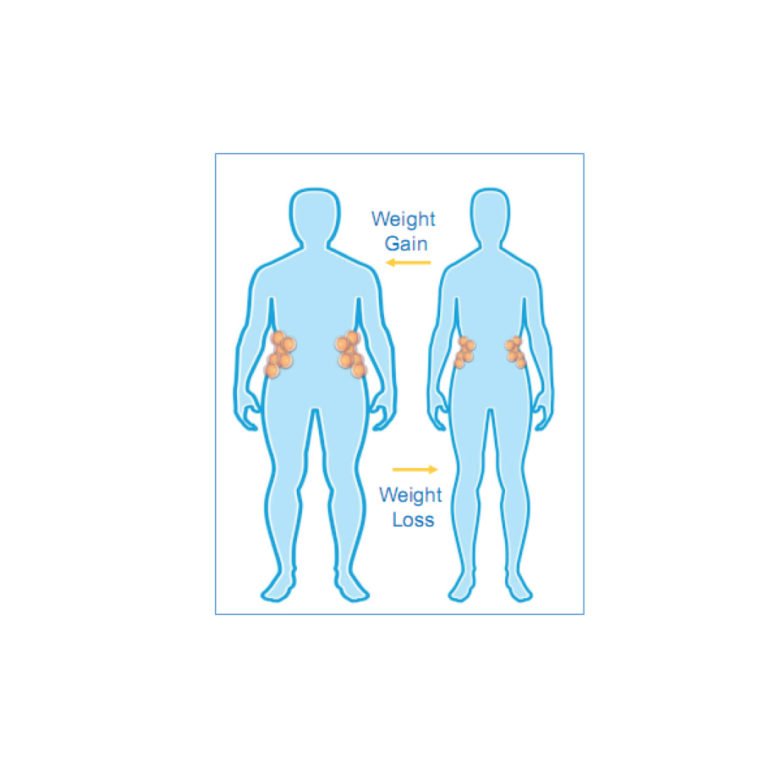
Working Principle
Normally, losing weight by diet control, exercise or body slimming with ordinary treatments is unable to reduce the number of adipose cells as those methods just change fat cell size. If you gain weight, those cells can expand as well. With Cryolipolysis from Coolsculpting, an applicator emits cold energy into the skin layers and stabilizes its temperature at -12 °C for a while until the fat cell is freezing and atrophy. After that, the lymphatic system will remove these dead cells from the body.
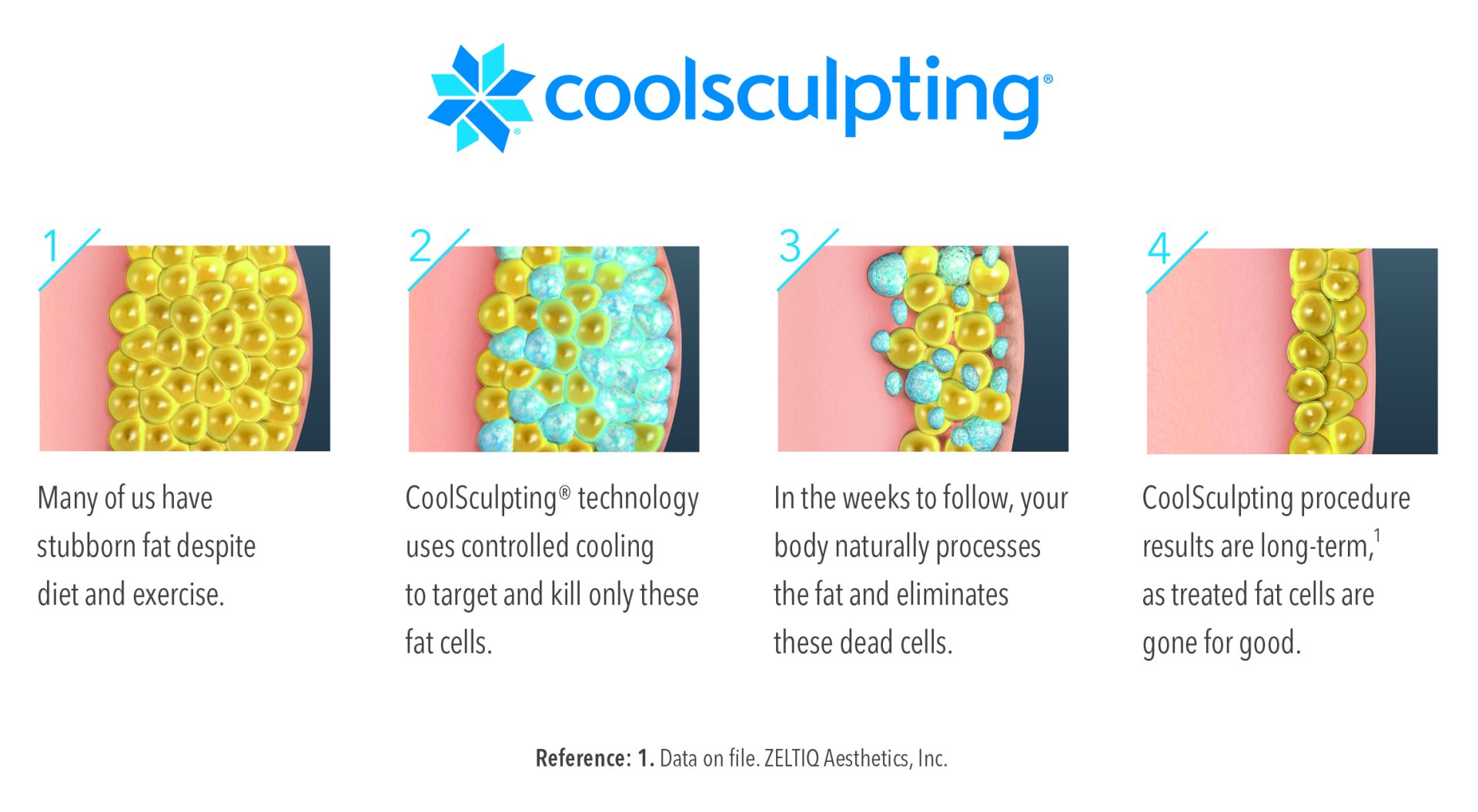
Since the adipose cell is decreasing, the subcutaneous layer becomes thinner. This technique can powerfully reduce 20-25% of unpleasant adipose cells in the treatment area, and atrophic cells will not restore nor regain its numbers. Thus, Coolsculpting is as potential as liposuction. However, Coolsculpting is beyond liposuction because it causes no wound, no rehabilitation, and is very safe. Additionally, this technique does not affect adjacent cells such as skin, vessels, nerves, and so on. It is found that adipose cells will become atrophy after 2-3 days of treatment, and a satisfying result will be seen after 3-6 weeks. Those ugly fat cells will be naturally eliminated from your body. This treatment focuses on local excessive fat which is located in the hardest place to remove or ineffective reduced by diet control or exercise such as the belly, back, love handle, side of your body, upper arms, inner and outer thighs, and also breasts in a male.
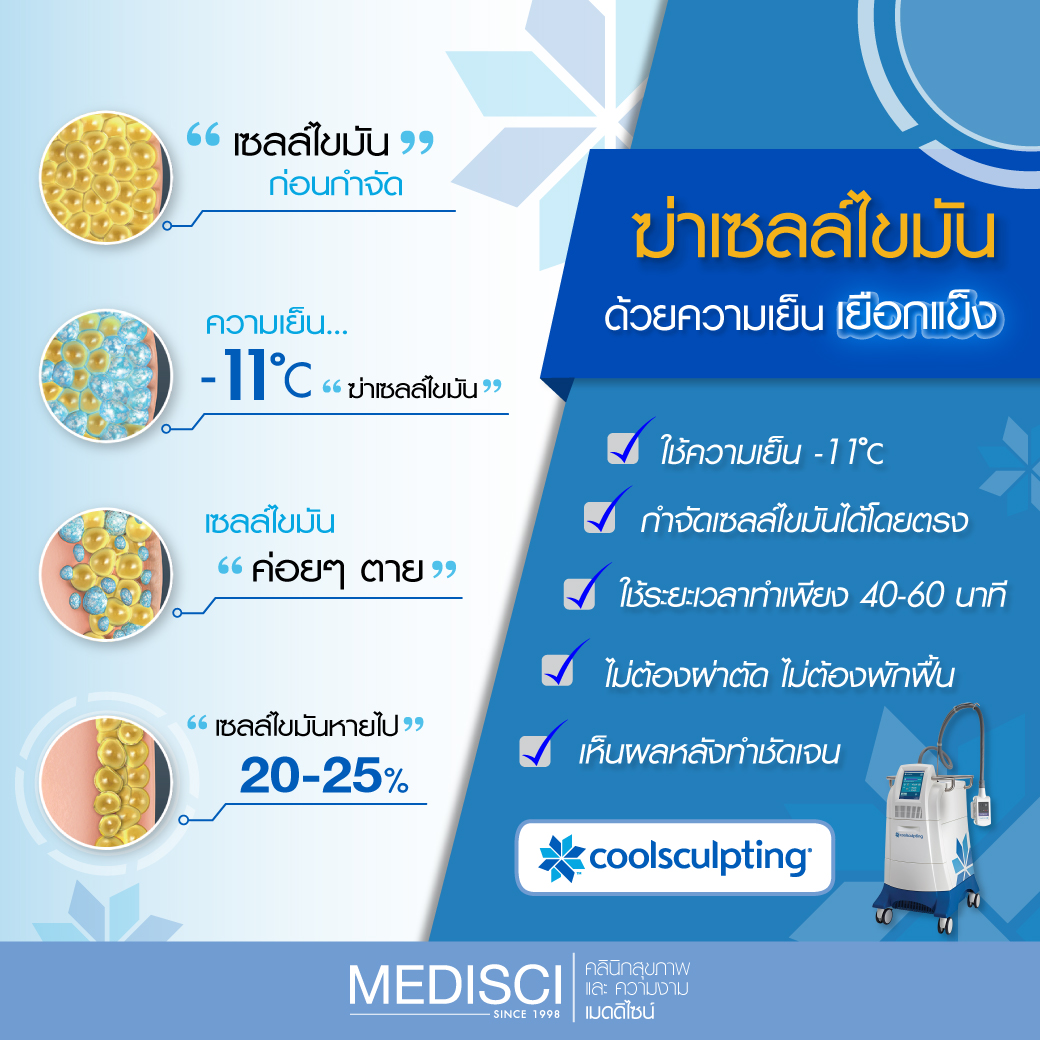
Suitable for:
Any patient who has experienced an unsatisfying local excessive fat in these areas:
- Love handle
- Breasts (in male)
- Upper arms
- Belly
- Thigh
- Back
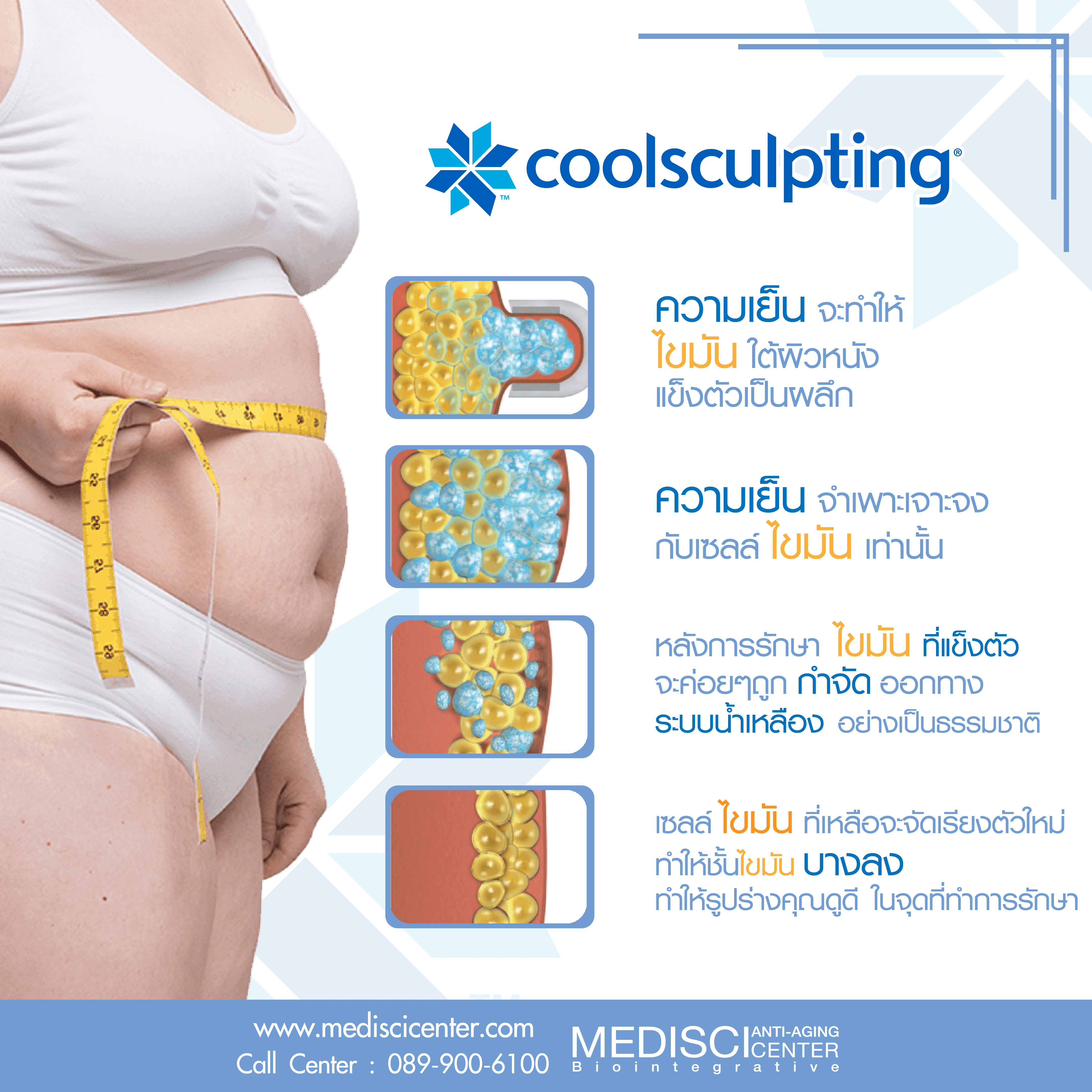
Maintenance and post-operative care
- Undergoing any surgery at least 8 months after treatment
- Regularly Drink 8 glasses of water a day for 3 months
- These symptoms might occur 2-3 days after treatment
- Redness and swelling on your skin
- Get slight cramps or pain
- Numbness in the treatment area and can disappear within 2-3 weeks
This symptom might occur 1 week after treatment
Itchy and twinge on the treatment area
According to clinical studies, side effects might occur on different levels in each patient. Those symptoms can be relieved by
- Using a fabric bandage on the treatment area
- Making a cold compress
- Applying Warm medicated plaster
- Wearing tight dress or abdomen waistband
- Applying Benadryl or Ambien at night
- Taking gabapentin/ Neurontin/ Lyrica
- May have vasovagal symptoms (dizziness, vertigo, nausea, fatigue, sweat, and faint) during or immediately after treatment. These symptoms must be instantly noticed to operators, but it can gradually disappear.
- Hard nodules might be occurred on the treatment area after treatment and can be gradually disappeared within 3-6 months
- May feel uncomfortable and pain in treatment area 3-4 days after treatment and can be gradually disappeared within 2-3 weeks
- Skin might get darker after treatment
- Redness from cold temperature might be occurred after treatment and can be gradually disappeared.
- If any abnormal symptoms on treatment area get worse such as subcutaneous layer regaining in 5 months after treatment (paradoxical adipose hyperplasia: PAH), patients should immediately consult a physician.
- Patients should follow up in 30 days after treatment for reevaluating their bodies.
Contraindications
- Vascular diseases such as Cryoglobulinemia or Paroxysmal Cold Hemoglobinuria (PCH)
- Cold intolerance such as urticaria or Raynaud’s disease
- Abnormal circulation area
- Neurologic diseases such as postherpetic neuralgia or diabetes mellitus
- Abnormal sensory area
- Open or infected wound
- Abnormal bleeding
- Hernia
- Skin disease areas such as eczema or rashes
- Any electrical devices implantation such as pacemakers or neurostimulators
- Pregnancy or breastfeeding women
- Area of internal fat accumulation such as visceral belly fat
- Cold allergies or cold sensitivity such as cold urticaria or Raynaud’s phenomenon
- Extremely skinny
Contact Us
- Call center: 089-9006100
- North Park (Ngam Wong Wan): 02-954-9440
- Ratchapruek: 02-863-8765
- Sukhumvit 39: 02-259-6992
- Line OA: @MEDISCI





